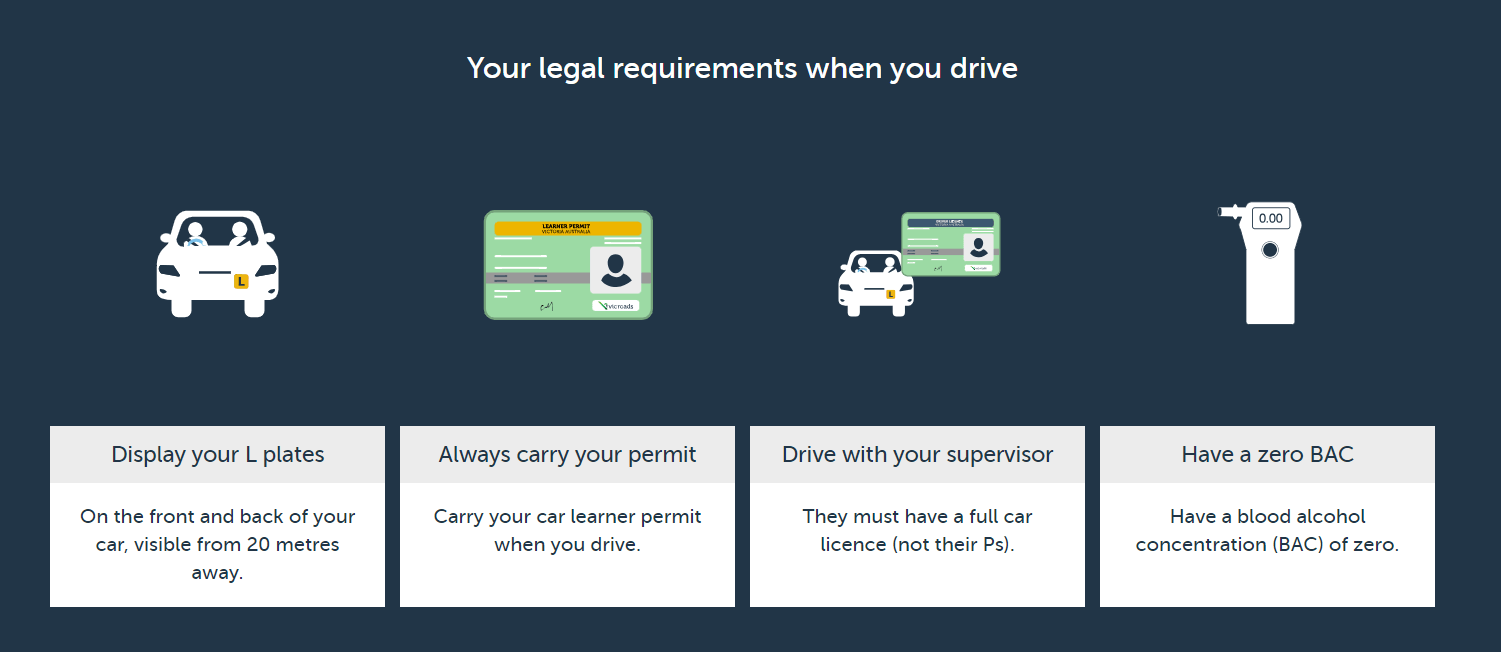Australia boasts breathtaking landscapes, from golden beaches and rugged coastlines to vast outback deserts and lush rainforests. Having a car unlocks the freedom to explore these diverse regions at your own pace. To legally operate a car on Australian roads, you’ll need a valid driver’s license. This guide will equip you with the knowledge to navigate the process of obtaining a full driver’s license in Australia, ensuring you hit the road confidently and safely.
Understanding the Australian Driver’s License System
Australia utilizes a Graduated Licensing System (GLS) designed to progressively develop safe driving skills and habits. The GLS involves three distinct stages:
- Learner’s Permit: This initial stage allows supervised driving experience under the guidance of a licensed driver.
- Provisional License: After meeting specific requirements, you can drive independently with limitations, such as passenger restrictions and curfews (depending on the state).
- Full License: This unrestricted license signifies your competency as a driver and removes all limitations.
Getting Started: Applying for a Learner’s Permit
To be eligible for a learner’s permit, you’ll need to meet the minimum age requirement, which varies slightly between states (typically 16 or 17 years old).
The application process typically involves:
Visiting your local driver licensing authority.
- Providing required documents such as proof of identity (passport or birth certificate), residency (utility bill or rental agreement), and (in some cases) a medical certificate.
- Paying the application fee.
You’ll also need to pass a computer-based learner’s permit test. This test assesses your knowledge of road rules and safe driving practices. Many driver licensing authorities offer resources and practice tests to help you prepare.
Charts and Resources:
- A table summarising the Graduated Licensing System stages across different states in Australia can be found on the website of the Australasian Road Safety Council (https://australasianroadsafetyconference.com.au/).
Additional Considerations for Car Hire
While a learner’s permit allows supervised driving, it won’t enable you to rent a car. To hire a car in Australia, you’ll need a minimum of a provisional license. Be aware that car rental companies may have additional age restrictions (usually 21 or 25 years old) or require you to have held your license for a specific period (often 1-2 years).
1. Learner’s Stage: Learning to Drive Safely
Congratulations on obtaining your learner’s permit! Now comes the exciting but crucial part: developing your driving skills.
- Understanding Learner’s Permit Conditions and Restrictions: Familiarise yourself with the limitations of your learner’s permit. These typically involve:
-
- Driving only under the supervision of a qualified driver (usually someone over a certain age who holds a full license).
- Displaying L-plates on your vehicle.
- Observing curfew restrictions (may vary by state).
- Finding a Qualified Instructor or Supervisor:
-
- Consider enrolling in driving lessons with a certified instructor for professional guidance.
- Choose a supervising driver who is patient, experienced, and holds a full license.
- Practising Safe Driving Techniques:
-
- Focus on mastering basic maneuvers like starting, stopping, steering, reversing, and navigating intersections.
- Gradually progress to more complex situations like highway driving and night driving.
- Prioritize defensive driving techniques to anticipate hazards and react safely.
2. Moving Up: Obtaining a Provisional License
After fulfilling the learner stage requirements, you can progress to a provisional license.
-
Eligibility Requirements:
-
- Completion of a designated minimum learner permit holding period (varies by state).
-
- Passing a theory test demonstrating your knowledge of road rules and safe driving practices.
-
Upgrading from Learner’s Permit:
-
- The process typically involves visiting your local driver licensing authority.
- Submit the required documents and pay the upgrade fee.
-
Provisional License Test:
-
- This practical driving test assesses your ability to handle a vehicle safely in real-world conditions.
- Many driver licensing authorities offer resources and practice tests to help you prepare.

3. Provisional Stage: Navigating the Roads with Restrictions
The provisional license is like a stepping stone between a learner and a fully licensed driver. It grants you more freedom to drive on your own, but with some important restrictions in place to help you gain experience safely.
Understanding the Rules of the Road
Provisional licenses come with conditions that vary depending on your location. Here are some common restrictions:
- Passenger limitations: Young drivers, especially teenagers, might be limited in the number of passengers they can carry, particularly at night. This is to minimize distractions and ensure you focus on the road.
- Curfews: Nighttime driving might be restricted for provisional license holders. This is because darkness presents additional challenges for new drivers.
- Vehicle limitations: Powerful vehicles with high engine capacity might be off-limits until you gain more experience behind the wheel.
Remember, these limitations are for your safety and the safety of others on the road.
Staying Safe Behind the Wheel
Even with a provisional license, safe driving practices are paramount:
- Obey all traffic laws and speed limits. This includes stop signs, traffic signals, and designated speed zones.
- Avoid distractions. Put your phone away and focus on driving. Don’t eat, drink, or adjust the radio excessively while driving.
- Practice defensive driving. Be aware of your surroundings, anticipate the actions of other drivers, and maintain a safe following distance.
The Importance of the Provisional Stage
The provisional stage is crucial for building the skills and habits that make you a safe and confident driver for life. By following the rules, staying focused, and gaining experience in a controlled environment, you’ll be well-prepared to navigate the roads independently once you earn your full license.
4. Reaching Full License Status
The provisional stage prepares you for the ultimate goal: obtaining a full driver’s license!
- Completing Required Driving Hours: Most states require a minimum number of driving hours logged during the provisional stage, often under the supervision of a licensed driver.
- Understanding Full License Criteria:
- Fulfilling the designated driving hour requirement.
- Maintaining a clean driving record (no major traffic offences).
- Passing a final practical driving test (if required by your state).
- Celebrating Your Achievement:
- Earning a full driver’s license signifies your competency and responsibility as a driver.
- It unlocks unrestricted driving privileges and the freedom to explore Australia’s diverse landscapes at your own pace.

5. Renewing and Maintaining Your Driver’s License
In Australia, driver’s licenses aren’t permanent. To keep yours valid, you’ll need to renew it every few years. This process is generally straightforward:
- Visit your local driver licensing authority: This could be a government department office or an authorized agent.
- Pay the renewal fee: The cost can vary depending on your state and the length of your renewed license (e.g., 1 year vs 5 years).
Many states now offer online or phone renewals for eligible drivers. Check your state’s licensing authority website for details and any exceptions (e.g., if you need a new license photo).
Maintaining a Clean Driving Record: Drive Safe, Avoid Penalties
Earning your license is just the beginning. Responsible driving habits are essential for keeping your license and ensuring everyone’s safety on the road. Here’s why a clean record matters:
- Traffic violations: Breaking traffic laws can lead to fines. These can add up quickly and become a financial burden.
- Demerit points: Serious traffic offences can result in demerit points being added to your license. Accumulating too many points can lead to license suspension or even cancellation.
- License suspension: In severe cases, your license could be suspended for some time, meaning you’d be legally prohibited from driving.
By driving responsibly and following the rules, you can avoid these consequences and keep your driving record clean.
Staying Informed: Knowledge is Power on the Road
Road rules and regulations aren’t static. They may be updated or revised to improve safety or address new driving situations. To ensure you’re always aware of the latest regulations:
- Visit your state’s driver licensing authority website: This is the official source for up-to-date information on driver’s licenses, traffic laws, and any relevant changes.
By staying informed and driving responsibly, you can ensure a smooth and safe journey throughout your driving years.
Conclusion
Obtaining a full and valid driver’s license in Australia empowers you with the freedom and responsibility to navigate the open road. This guide has equipped you with a roadmap to navigate the Graduated Licensing System, develop safe driving skills, and ultimately become a competent and responsible driver.
Renting a Car with Alpha Car Hire
Once you’ve achieved your full driver’s license, Australia’s vast landscapes await exploration! Alpha Car Hire can be your trusted partner for hitting the road.
Alpha Car Hire offers a range of high-quality, budget-friendly rental vehicles to suit your needs, from fuel-efficient compacts to spacious SUVs and family vans. They are conveniently located near major airports and transportation hubs across Australia, ensuring a smooth start to your adventure.
Requirements for Renting a Car with Alpha Car Hire
- A valid full Australian driver’s license (or an international driver’s permit if you’re visiting from abroad).
- Meeting the minimum age requirement (typically 21 or 25 years old, depending on the car category).
- Holding your full license for a specified period (often 1-2 years).
Visit Alpha Car Hire’s website (https://alphacarhire.com.au/) to browse their car selection, check rates, and book your rental car today!
Recommended Resources:
- Each state or territory in Australia has its own driver licensing authority website. These websites provide detailed information on the application process, learner’s permit tests, and Graduated Licensing System requirements specific to your location.
- The Australasian Road Safety Council (https://australasianroadsafetyconference.com.au/) offers a wealth of information on road safety and the Graduated Licensing System in Australia.
By following these steps and understanding the Graduated Licensing System, you’ll be well on your way to obtaining a full driver’s license in Australia, opening doors to independent exploration and unforgettable adventures on the open road.


